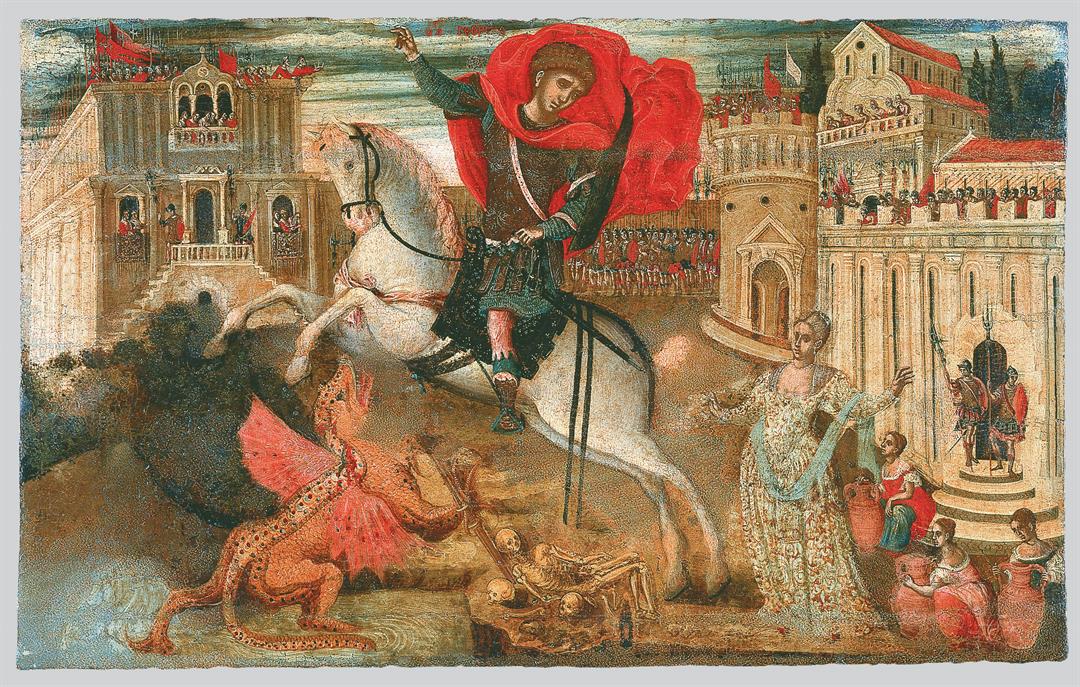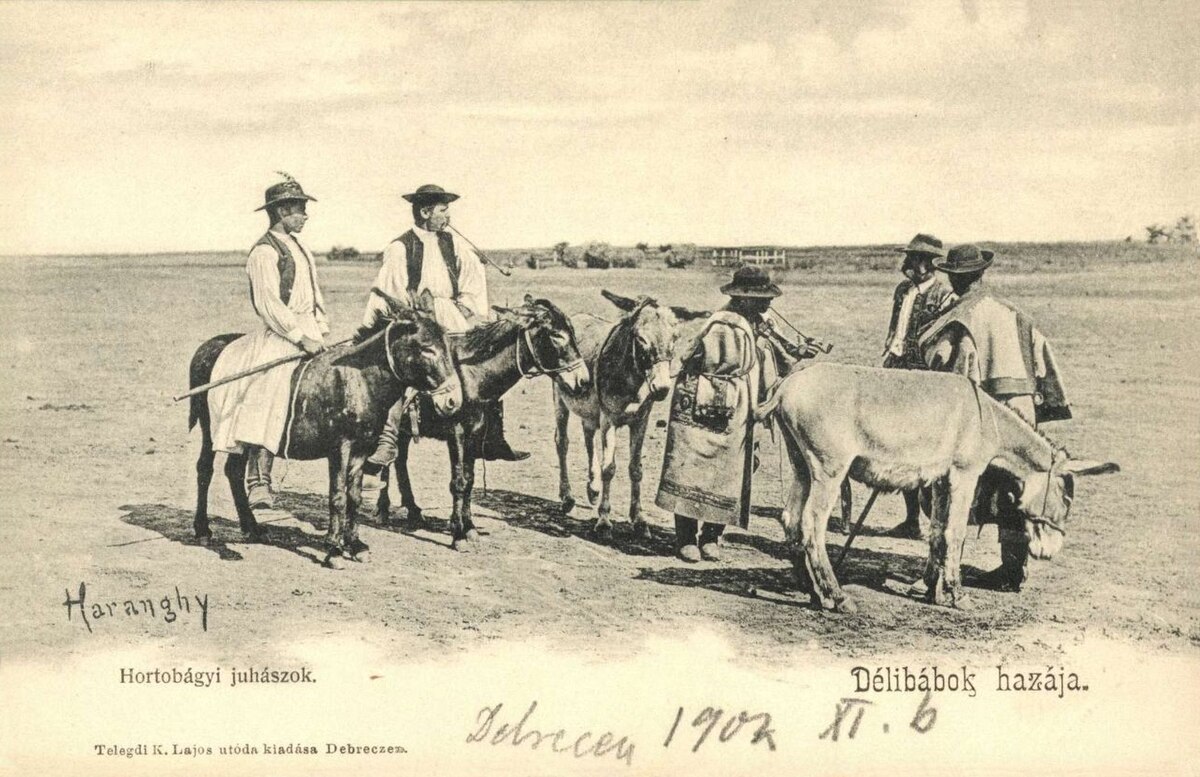Saint George’s Day in Hungary: folklore about witches and customs related to the beginning of spring

Across the globe, many Christian communities celebrate Saint George’s Day, most commonly on 23 April. Hungary, Slovakia, and the Czech Republic are a special case, as in these countries, Saint George’s Day falls on 24 April. In Hungary, this is the day animals were first put out to graze. It was also a potent time for witchcraft.
Who was Saint George?

Saint George died a martyr’s death. This is how he became the patron of knights, mounted soldiers, gunsmiths, belt walkers, travelling lads and scouts. Nowadays, in Hungary, the Day of the Police is also celebrated on Saint George’s Day, 24 April, as Saint George has become the patron saint of policemen.
Historically, many traditions are connected to the saint: this day was celebrated as a shepherd’s holiday and it was also considered to be the day of magic. Arcanum.hu collected the following Hungarian customs related to Saint George’s Day.
On Saint George’s Day, either a bountiful harvest or curses could befall people
In Hungarian folklore, the real beginning of spring starts on Saint George’s Day, due to which, many superstitions and customs were connected to this day with which the farmers tried to ensure the abundance of crops and the health of animals for the upcoming year.
On Saint George’s Day, the animals were put out to the pasture to graze for the first time in the year. For the animals to be healthy, to find ample grass and to have a good milk yield, the cattle were driven through chains, axes, ploughshares, eggs or the hostess’s apron for magical purposes.
On Saint George’s Day, it was also very important what type of stick the shepherds used to lead the animals out. In some places, they would cut sprigs of rosehip, lay it crosswise in the barn of the door and lead the animals through the door that way, so that witches would not be able to harm them. On the way to the pasture, the animals would be struck with the rosehip twigs so that they would have milk in abundance.

Hungarian folklore considered Saint George’s Day to be a suitable time for casting spells. Accordingly, many traditions on Saint George’s Day had to do with magical practices.
People would also gather dew for various magical purposes, but mainly to ensure that cows would have plenty of milk. Hungarians would go out to the fields and collect dew on their clothes while also picking handfuls of grass. They would give the grass to the cows and then squeeze the dew from their damp clothes into milk pots to ensure that there would be lots of butter made from the milk of the animals.
As magic was potent on this day, according to folklore, this was also the time when witches would gather and hold their Sabbaths. To ward off evil spirits and scare the witches from entering their homes, people would put willow or birch twigs on their windowsills and in stables. They would also burn incense inside the milkmaids so that the witches could not spoil the milk yield with their hexes.
There were places where it was believed that if someone woke up after the Sabbath day and found that their gate had been carved into, it meant that the witches had put a curse on the house, taking away the milk of the animals.
Black cats and hexes – The history of witch hunts in Hungary
The practice of witch-hunting spread to Hungary from Western Europe, with the laws relating to witches often adopted from foreign lands. There were far fewer witch trials in Hungary than, for example, in Germany or the United States, but even so, at least a thousand cases took place, index.hu writes. Most often the accused were people who did not abandon their pre-Christian religious practices.
Most of them took place in Cluj, Debrecen, and the cities of Eastern Hungary. The most famous witch trial took place in Szeged, on 23 July in 1728, resulting in six men and six women being burned at the stake. The punishment was carried out on a strip of land outside the city, which to this day is called Witch-isle (Boszorkánysziget). The witches of Szeged were accused of selling the rain to the devil, which is why the area was hit by drought.
Balatonimuzeum.hu, for example, recalls this story that happened in a village near Lake Balaton: after an old woman said to have entered a barn in the form of a black cat, the cow refused to give any milk. The farmer who owned the cow beat the black cat. The next day the old woman had bruises all over her body: that’s how the people realised that she was a witch.
Witches were tried in several ways, for example with the fiery iron test, during which the accused had to hold a piece of iron heated up in a fire. Their hands were bandaged, and after three days the wounds were examined. If no burn marks were visible or the wounds started to heal, the person was declared innocent, but if their hand was wounded, then they were a witch.
We have already written about another day in Hungary closely connected to witchcraft: the 13th of December, “Luca’s Day”, the winter solstice before the advent of the Gregorian calendar.
On this day, they began to carve the three-legged Luca chair, which took 13 days to complete. On 26 December, the boys sneaked the chair into the midnight mass, and according to Hungarian folklore, whoever stood on it could spot if there was a witch in the crowd.
Read also:
Surprising legends of the Hungarian dragons
Hungarian April Fools’ Day and other spring traditions
Source: Index, Arcanum, Balatonimuzeum








Christianity, irrespective of its innumerable sects, flavours and saints, is an introduced Abrahamic sand-religion, same as judaism and islam, forced upon Europeans by the point of the sword, alien to traditional and ancient European culture, values, morals and attitudes! Christianity is not part, never have been part, and will not be part of deep European consciousness! It’s figurehead is a duly excecuted criminal, homosexual, and pedophile jew, Yeshua ben Yoseph, and its doctrine is an anti-White, globalistic ideology, that only favours its masters, the ones who invented it, the jewish race and religion! Christians and christianity have exterminated cultures, races, as well as White Brothers and Sisters in the name of their religion, throughout the World, from the Incas and Aztecs of South America for judeo-christian interests, to the Whites of Europa in countless wars on European soils for jewish interests, and that is only scratching the surface of the scope of destruction that jewish-christianity had brought upon Our Peoples throughout the course of history! There are only two options for European Peoples everywhere: discard the poison of jewish-christianity for ever, or die with it in submission to jewish interests!!!